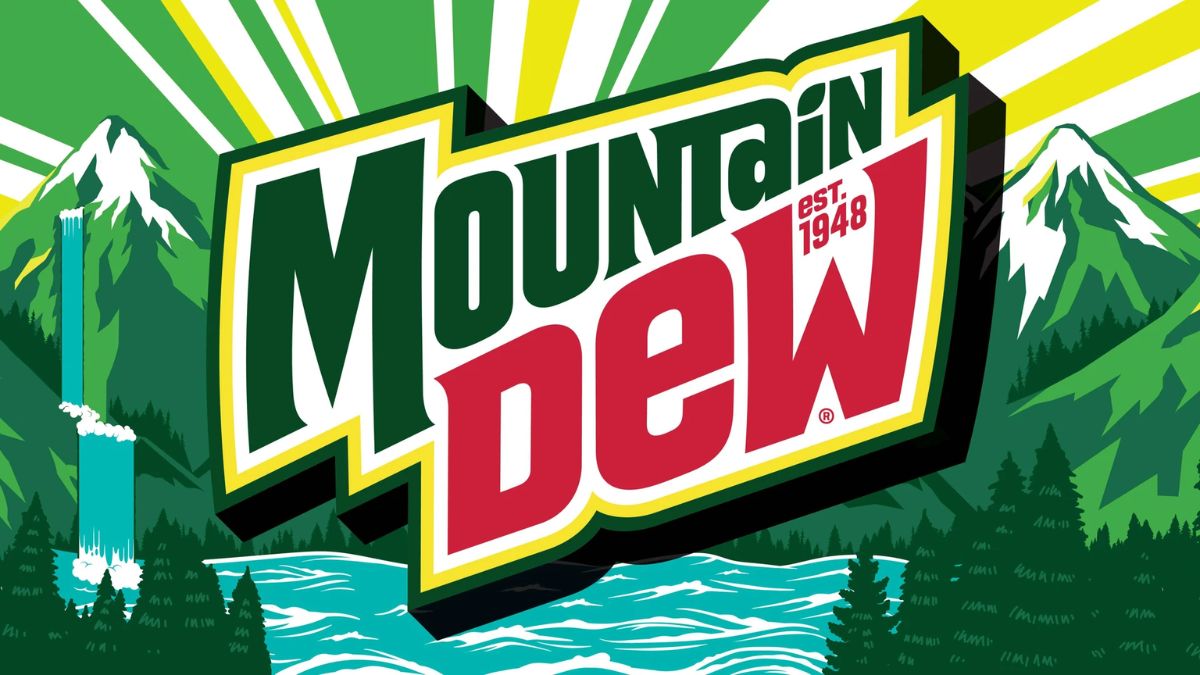 Image credits - Fast Company
Image credits - Fast Company
Advertisement
A bold return to its roots
Mountain Dew is no stranger to rebranding, but its latest makeover is a full-circle return to its origins. PepsiCo’s soda giant has dropped its shorthand “MTN Dew” in favor of the classic “Mountain Dew” across its cans and bottles. This change is not just cosmetic; it’s an effort to reconnect with the brand’s history, one that dates back to 1948 when it was first created as a mixer in the Smoky Mountains of Tennessee.
The new look features a more natural, earthy aesthetic, complete with mountainous imagery and vibrant citrus hues, signaling the brand’s connection to the outdoors and its refreshment cues. The redesigned logo, with softened angles and three-dimensionality, takes inspiration from the 1990s Mountain Dew logo but with a modern twist. The return of the word “mountain” marks a conscious decision to lean into the brand’s nostalgic appeal and highlight its rugged, adventurous roots.
Why the change?
Mountain Dew’s rebrand comes at a crucial time. Sales in North America have been on the decline, with figures showing a 7% drop in volume for the first half of 2024. This dip follows a broader trend in the beverage industry, where sugary sodas face stiff competition from healthier alternatives like sparkling waters and “better-for-you” drinks. In addition, the soda market has been increasingly saturated with trendy new entrants, such as the better-for-you brands Poppi and Olipop, both of which have capitalized on the growing demand for more mindful drinking options.
To address these challenges, PepsiCo is shifting Mountain Dew’s focus away from its previous energy-drink marketing, which leaned heavily on caffeine and sugar content. Instead, the new visual identity aims to evoke a sense of outdoor adventure — a “different kind of energy” that draws from the natural world rather than artificial stimulation.
“The nostalgic look of the new visual identity, combined with a fresh, outdoorsy feel, resonated positively with both Gen Z and Millennial consumers,” said Umi Patel, PepsiCo’s vice president of consumer insights. The aim is to attract a new generation of fans while rekindling the loyalty of long-time Dew drinkers.
How many times has Mountain Dew changed its look?
Mountain Dew has undergone multiple logo and packaging changes since its inception. Below is a brief timeline of its major rebranding milestones:
- 1948 – Mountain Dew was created as a mixer for whiskey in the Tennessee Smoky Mountains. The initial packaging was simple and rustic, reflecting its origins.
- 1961 – The brand’s logo was updated with a more stylized version of the name, emphasizing its mountain roots.
- 1980s – A bold shift in design took place, with Mountain Dew adopting a more vibrant and energetic logo as it sought to appeal to a younger audience, especially in the action sports and extreme sports communities.
- 1990s – The iconic “Mountain Dew” logo was reworked again, with a focus on sharper, angular fonts and bold colors, which aligned with the “Do the Dew” slogan that became synonymous with the brand’s energy-driven image.
- 2009 – In a strategic rebranding effort to appeal to a broader audience, Mountain Dew switched to the abbreviated “MTN Dew” and introduced a more minimalistic logo with angular fonts and a modern color palette.
- 2025 – The current rebrand reverts to the full “Mountain Dew” name, complete with mountain imagery and a more natural, outdoors-inspired look.
Each rebrand has reflected the evolving goals and target demographics of the brand, from its initial days as a niche mixer to its status as a mainstream, energy-driven beverage.
A timeless identity for a new generation
Mountain Dew’s decision to bring back its original look is a testament to the brand’s willingness to evolve while staying true to its roots. As it rolls out its refreshed visual identity in May 2025, the brand is aiming to reconnect with both new and old fans. Whether or not it can reverse the current decline in sales remains to be seen, but with its nostalgic nods to the past, the iconic beverage is certainly positioning itself for a brighter, more adventurous future.
